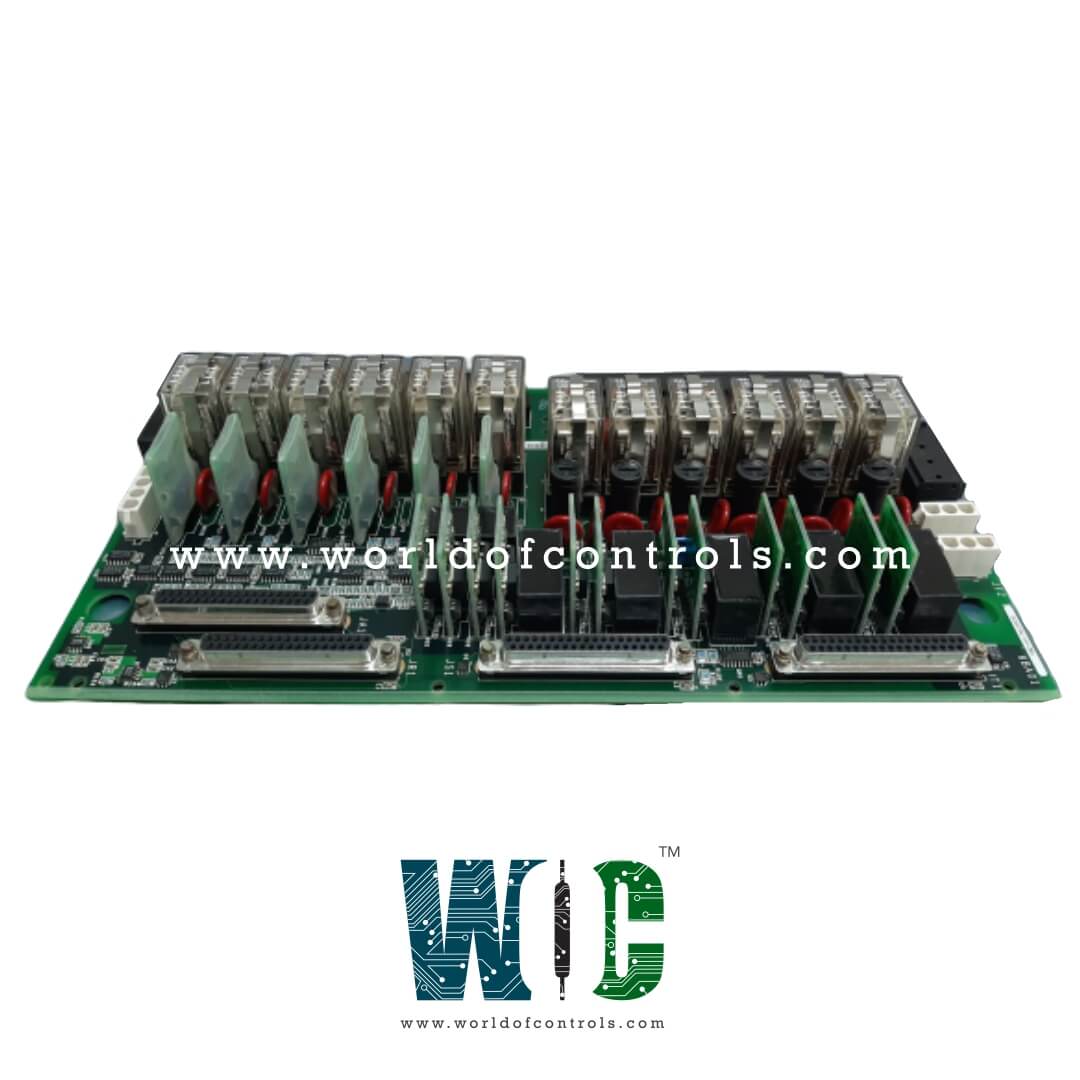
World Of Controls understands the criticality of your requirement and works towards reducing the lead time as much as possible.
IS200TRLYH1E - Simplex Contact Output Terminal Board is available in stock which ships the same day.
IS200TRLYH1E - Simplex Contact Output Terminal Board comes in UNUSED as well as REBUILT condition.
To avail our best deals for IS200TRLYH1E - Simplex Contact Output Terminal Board, contact us and we will get back to you within 24 hours.
SPECIFICATIONS:
Part No.: IS200TRLYH1E
Manufacturer: General Electric
Series: Mark VIe
Output Type: Isolated relay contacts (NO / NC)
Channels per Board: 8–16
Voltage Rating: 24–125 VDC
Current Rating: 2 A
Mounting: DIN rail
Technology: Surface mount
Operating Temperature: 0 to 60°C
Size 17.8 cm wide x 33.02 cm, high
Number of trip solenoids: 3
Repair: 3-7 Days
Availability: In Stock
Weight: 2 lbs
Country of Origin: United States
Manual: GEH-6721
FUNCTIONAL DESCRIPTION:
IS200TRLYH1E is a Simplex Contact Output Terminal Board manufactured by General Electric as part of the Mark VIe Series used in gas turbine control systems. The Simplex Contact Output Terminal Board is an I/O interface module designed for GE Distributed Control Systems (DCS). It provides isolated relay contact outputs for discrete control signals, supporting both Normally Open (NO) and Normally Closed (NC) configurations. Each output channel is electrically isolated from the control logic, ensuring protection of the system from field-side voltage transients.
The board is compatible with Simplex I/O modules and integrates directly with Mark VIe DCS platforms. It is mounted on DIN rails, with terminal strips clearly labeled for each output channel to facilitate organized wiring. Typical applications include turbine trip and interlock circuits, alarm annunciation, and auxiliary device control. LED indicators (if present) allow real-time monitoring of output states. The board is designed to handle standard industrial signal levels and conforms to DCS voltage and current ratings.
OPERATION:
The Simplex Contact Output Terminal Board functions as an interface between the control system and external field devices by converting discrete digital signals from Simplex I/O modules into isolated relay outputs. Each output channel responds to logic commands, activating or deactivating connected relays, alarms, or indicators in accordance with the programmed system logic. This allows precise and reliable control of field devices in turbine, generator, and industrial automation applications.
LED indicators, when provided, offer real-time feedback on the status of each output channel, facilitating troubleshooting, diagnostics, and verification of correct operation. The electrical isolation of the outputs safeguards the control logic from voltage transients, short circuits, and other disturbances originating from the field devices, ensuring safe and stable system performance under all operating conditions.
COMPATIBILITY:
The Simplex Contact Output Terminal Board is fully compatible with Simplex I/O modules and integrates seamlessly with Mark VIe Distributed Control Systems (DCS). It supports discrete output applications, including turbine trip and interlock circuits, alarm annunciation systems, and auxiliary device control. The board is designed to interface reliably with field devices such as relays, indicators, and alarms while maintaining electrical isolation, ensuring consistent performance across industrial automation and process control environments.
It adheres to standard industrial signal levels and voltage/current ratings specified for Simplex I/O modules, allowing flexible deployment in diverse DCS configurations. Its compatibility with existing Mark VIe systems enables easy retrofitting or expansion of control panels without requiring modifications to the control logic or system architecture.
WOC provides complete support for repairs, maintenance, and system upgrades for GE Speedtronic control systems. Our team of experts specializes in troubleshooting complex issues, replacing faulty components, and performing full system refurbishments to ensure optimal performance and reliability. We are committed to delivering cost-effective solutions while minimizing downtime, helping your operations run smoothly and efficiently. For any inquiries related to part availability, pricing, or technical assistance, our knowledgeable team is ready to provide prompt, professional guidance via phone or email, ensuring your systems remain fully operational and supported at all times.
What is the IS200TRLYH1E?
The IS200TRLYH1E is a Simplex Contact Output Terminal Board from GE’s Mark VIe series, designed for gas turbine and industrial automation control systems. It converts digital signals from Simplex I/O modules into isolated relay outputs, supporting both Normally Open (NO) and Normally Closed (NC) configurations. Each output channel is electrically isolated to protect the control logic from field-side voltage transients and disturbances.
What are its key specifications?
The board features 8–16 channels with isolated relay outputs rated at 24–125 VDC and 2 A per channel. It is surface-mounted and DIN-rail compatible, with operating temperatures from 0 to 60°C. The board measures 17.8 cm wide by 33.02 cm high and supports 3 trip solenoids.
How does the IS200TRLYH1E operate?
The board functions as an interface between the DCS and external devices by converting logic commands into relay actions. Each output channel can activate or deactivate alarms, indicators, or other field devices based on programmed system logic. Electrical isolation ensures safe, reliable operation even under transient or fault conditions.
What support and services are available from WOC?
WOC offers complete support, including part sourcing, repairs, maintenance, and system upgrades. Both unused OEM and fully tested refurbished boards are available with a warranty. Technical guidance and troubleshooting are provided 24/7 to minimize downtime and ensure reliable system operation.